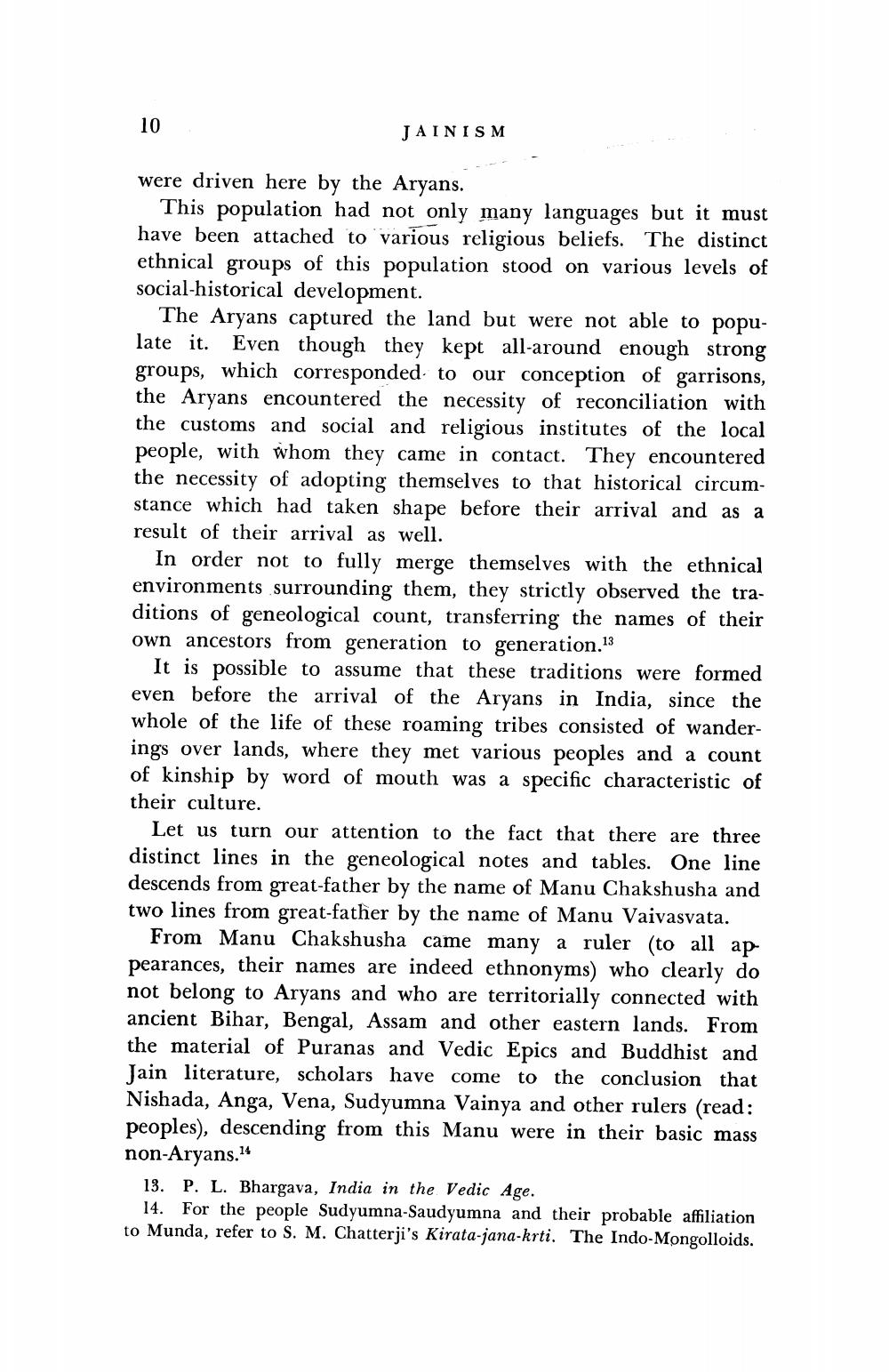________________
10
JAINISM
were driven here by the Aryans.
This population had not only many languages but it must have been attached to various religious beliefs. The distinct ethnical groups of this population stood on various levels of social-historical development.
The Aryans captured the land but were not able to populate it. Even though they kept all-around enough strong groups, which corresponded to our conception of garrisons, the Aryans encountered the necessity of reconciliation with the customs and social and religious institutes of the local people, with whom they came in contact. They encountered the necessity of adopting themselves to that historical circumstance which had taken shape before their arrival and as a result of their arrival as well.
In order not to fully merge themselves with the ethnical environments surrounding them, they strictly observed the traditions of geneological count, transferring the names of their own ancestors from generation to generation.13
It is possible to assume that these traditions were formed even before the arrival of the Aryans in India, since the whole of the life of these roaming tribes consisted of wanderings over lands, where they met various peoples and a count of kinship by word of mouth was a specific characteristic of their culture.
Let us turn our attention to the fact that there are three distinct lines in the geneological notes and tables. One line descends from great-father by the name of Manu Chakshusha and two lines from great-father by the name of Manu Vaivasvata.
From Manu Chakshusha came many a ruler (to all ap pearances, their names are indeed ethnonyms) who clearly do not belong to Aryans and who are territorially connected with ancient Bihar, Bengal, Assam and other eastern lands. From the material of Puranas and Vedic Epics and Buddhist and Jain literature, scholars have come to the conclusion that Nishada, Anga, Vena, Sudyumna Vainya and other rulers (read: peoples), descending from this Manu were in their basic mass non-Aryans.14
13. P. L. Bhargava, India in the Vedic Age.
14. For the people Sudyumna-Saudyumna and their probable affiliation to Munda, refer to S. M. Chatterji's Kirata-jana-krti. The Indo-Mongolloids.




